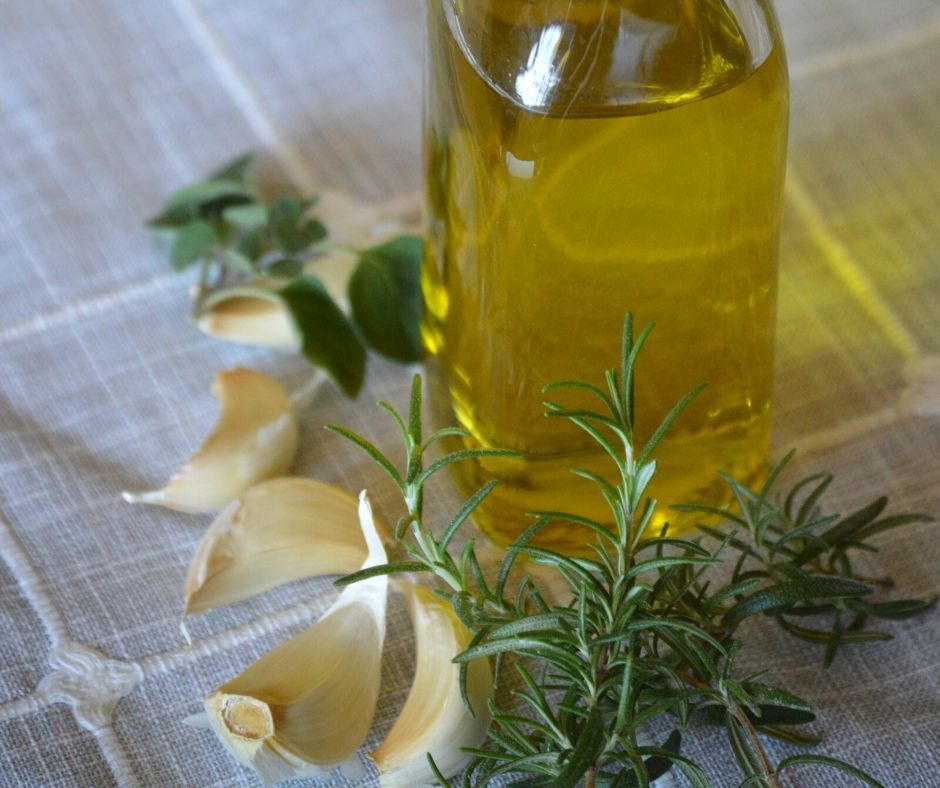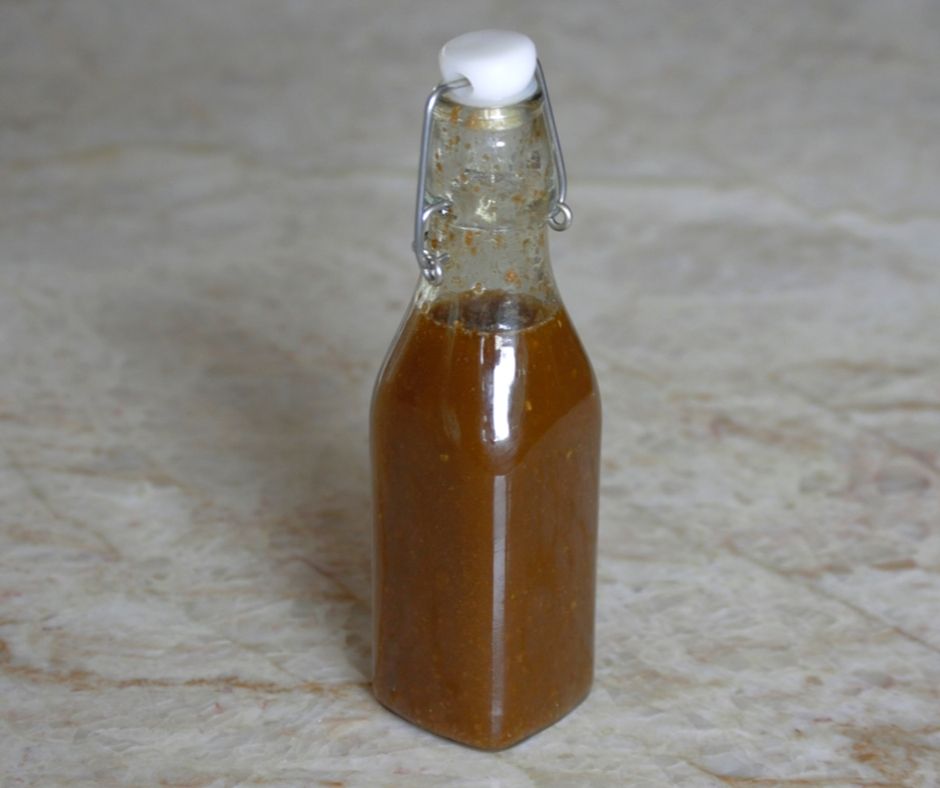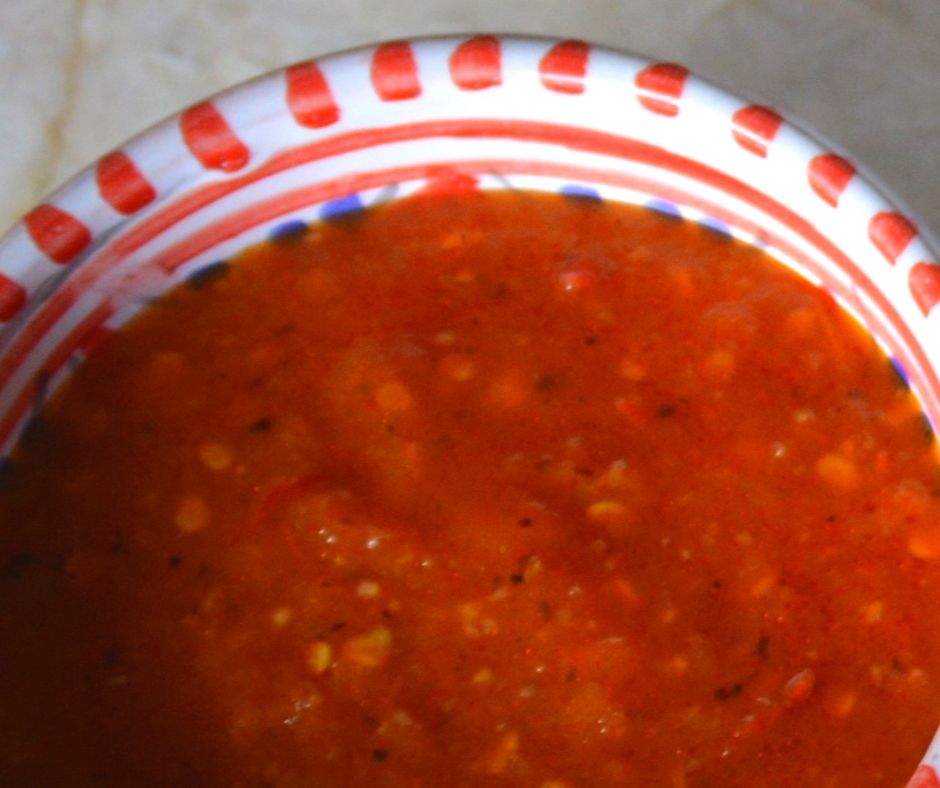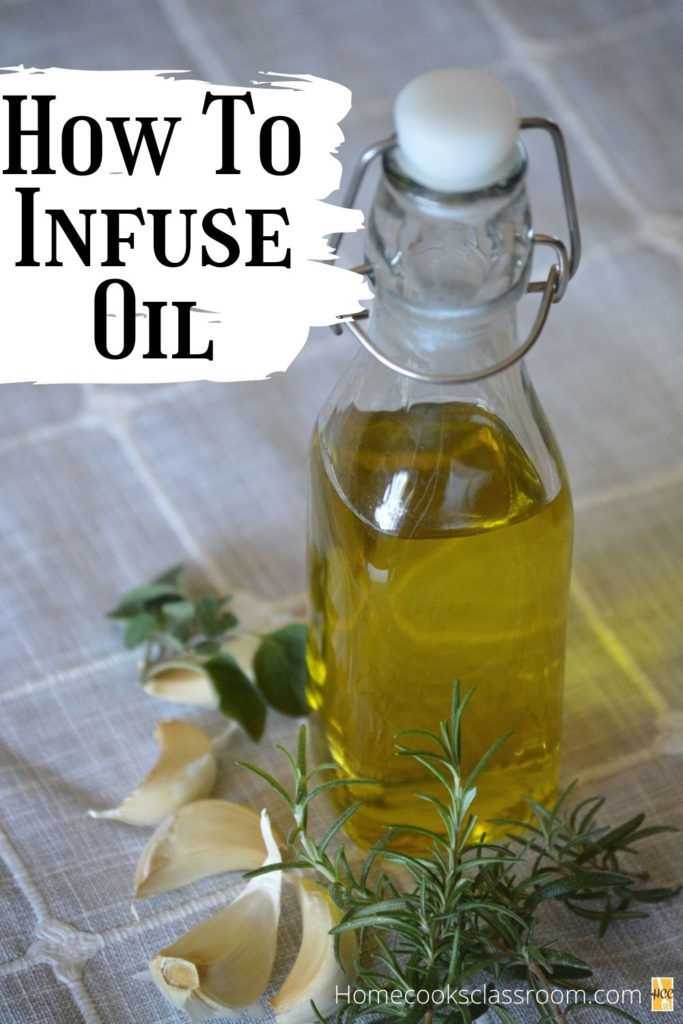
Infused oils are one of the most overlooked ingredients in the home kitchen. Which is a shame because they have so many great applications. You can use them to add subtle flavor to homemade salad dressings, sauces, and marinades. They are great when drizzled over finished dishes like pasta, pizza, vegetables, and even meat. Or you can keep it as simple as possible and use it as a dip for freshly baked bread.
Really anytime oil is used, an infused oil can be a more flavorful substitute.
And while it’s pretty easy to just buy a bottle straight from your local grocery store, I wouldn’t recommend it. That stuff is often way overpriced, limited in flavor, and filled with all sorts of preservatives. But, that’s not the case with homemade infused oils. And as you will find out in today’s lesson, making a batch at home is a fairly simple process.
How it’s made, Hot infusion vs. Cold infusion
Infusing oil is the process of taking a carrier oil (like olive, vegetable, or canola) and imparting it with the flavor and scent of another ingredient. And generally speaking, you have two options for achieving this at home.
A hot infusion vs. A cold infusion.
As the names suggest a hot infusion involves heating ingredients in oil for a couple of minutes and then letting it steep while the oil cools down. The benefit of this method is that it’s both quick and efficient.

A cold infusion on the other hand requires you to steep ingredients in cold oil for roughly a couple of weeks. Therefore it’s not the best method if you want to use your infused oil right away. But, since there is no cooking involved it is really easy to make.
So which method is best?
To be honest they are both great methods for infusing your own oil at home. And deciding which one to use really just comes down to time vs. ease.
What is the best oil to use?
As we just mentioned you will need a carrier oil to infuse your ingredients in. And frankly, any type of oil that stays in a liquid form at room temperature will work just fine. So unfortunately that means no coconut or palm oil.
You should also keep in mind that the main purpose of infused oils is to taste the infused ingredients. That’s why I recommend that you stay away from carrier oils that are strong in flavor like extra virgin olive oil, sesame oil, or walnut oil. Instead, it’s best to use a neutral-flavored one so you can taste all of those infused ingredients.
Some examples of neutral-flavored oils are
- Vegetable oil
- Canola oil
- Light olive oil
- Grapeseed oil
- Safflower oil
- Sunflower oil
Ingredients that can be infused into oil
Without a doubt, the most common ingredient used in infused oil is fresh herbs. And if you have a perennial herb garden then you’ll be saving yourself even more money making your own infused oil. That being said, the list of ingredients and flavor combinations that can be used are practically endless.
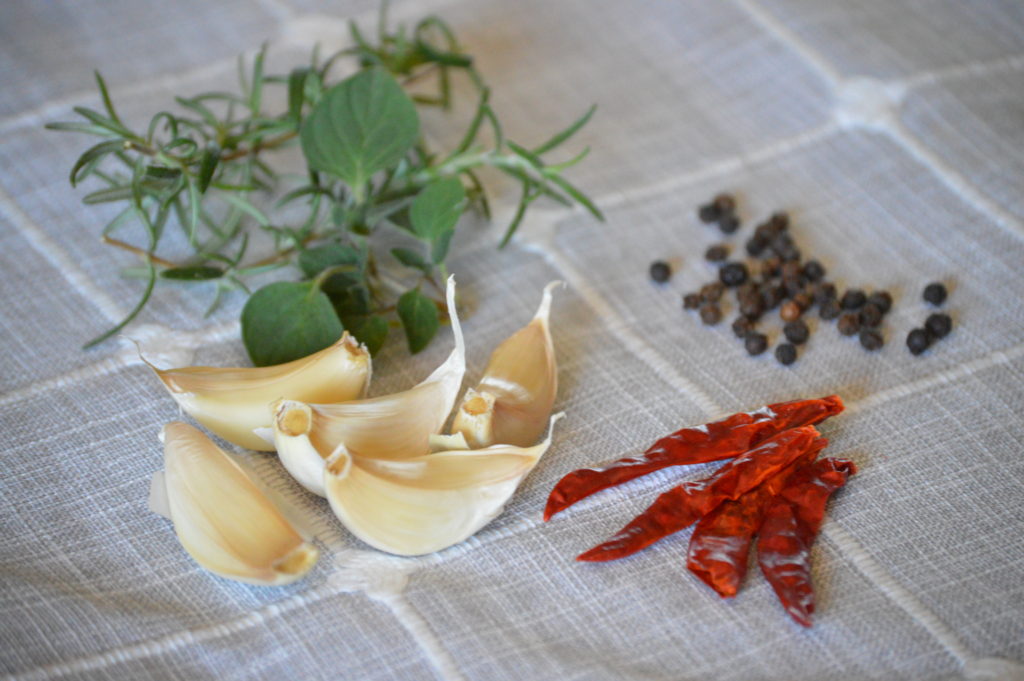
You can use aromatic ingredients like garlic, ginger, and dried chili peppers. Whole spices like black peppercorn, cumin seeds, or cardamom pods. And even dried citrus peel for a bright flavor.
Some of my favorite combinations include
- Rosemary, Thyme, and Garlic for a general Mediterranean flavor
- Chili flakes and Sichuan peppercorns to make Chinese chili oil
- Oregano and Lemon peel for use in homemade Greek dressing
- Lemongrass, Galangal, and Kaffir lime leaves, great in many Thai dishes
- Cilantro, Lime peel, and Cumin seeds, amazing in carne asada marinade
A little disclaimer on food safety
The last thing I want to do after spending all this time discussing infused oil is to scare you off from making it. However, there are a couple of things that you should be aware of to ensure that it’s made, stored, and used safely.
You see any infused oil that you make will be comprised of low acidic ingredients. Which means it can potentially be a breeding ground for deadly botulism. But thankfully if you follow four simple rules you’ll have nothing to fear.
- Make sure all of your ingredients are dried: Water is the main problem when it comes to botulism. That’s why it is very important that any ingredient used to infuse oil should be completely dry. Of course, ingredients like dried whole spices, dried citrus peels, or dried chili peppers are things that you don’t need to worry about. But, fresh garden herbs, especially if they have been washed are. So make sure to pick your herbs the night before and let them dry overnight on a paper towel before using.
- Sterilize your bottles: Make sure that any bottle that you use to store your oil is properly sterilized in hot water and dried completely.
- Remove all of the ingredients before storing: This step is going to be a disappointment for most people. But you need to strain/remove every ingredient from the carrier oil before you store it. Why? Well just like with water, any ingredient you use for your infusion can carry botulism. And if they are left in your oil the risk of botulism only rises. Now, I’m sure some of you are probably saying “but Patrick I’ve seen infused oil sold at the store with ingredients still in the bottle, how come they’re able to do it?”. The simple answer is that those ingredients go through a process called acidification. And while you technically can do this at home, It’s sort of a complicated process that I generally recommend you stay away from.
- Use within two weeks: Lastly, the best way to ensure that you are safe from botulism is to use your infused oil as soon as possible. Preferably within a couple of days and no longer than two weeks.
Infused Oil Recipe
You will need:
1 Cup of carrier oil
¼ to ½ Cup of dried infusion ingredients
Sterilized bottles or jars
Candy thermometer, needed only for a hot infusion
Instructions for Hot Infusion
1. Put the oil and ingredients into a small saucepan.
2. Place the saucepan over medium heat and let the oil come up to at least 140 degrees Fahrenheit (60 Celcius) and no hotter than 180 (82 Celcius).
3. Keep the oil at this temperature for 5 to 10 minutes.
4. Pour the oil and ingredients into a small bowl and let it cool completely.
5. Strain the oil through a sieve or coffee filter into a sterilized glass bottle or jar.
Instructions for Cold Infusion
1.Place your carrier oil and infusion ingredients into a sterilized jar.
2. Place this into a cool and dark area for at least a couple of days and up to 2 weeks.
3. You will know that it is done by tasting the oil every day until it has reached the desired taste that you prefer.
4. Strain the oil through a sieve or coffee filter into a different glass bottle or jar that has been sterilized.
